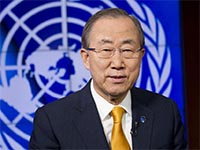There is still enough water for all of us – but only so long as we keep it clean, use it more wisely, and share it fairly.
Ban Ki-moon, former UN Secretary General
(United Nations 2012, as quoted in Holden 2014)
The majority of the world’s population are facing water quantity and quality issues. Over 70% of our blue planet’s surface is covered with water, yet a scarce 3% is fresh, and much less than 1% is available for human use as surface water or groundwater. More than 780 million people lack access to an improved water source (about one in nine people) (water.org). The water infrastructure of the U.S. is fast becoming obsolete, endangering our access to clean water and good health (e.g., Liquid Assets, WPSU 2006). The “free” ecosystem services provided by Earth’s waters that benefit human populations are being degraded. Thus, equitable access to water supplies, water security, and conservation of aquatic ecosystems are recognized as significant global issues (Roundtable and Council 2004, Vorosmarty et al. 2010, World Water Council 2012). The situation has become more urgent regionally and continentally.
As was stated from the outset, “Demand for water is not evenly distributed in space and time.” In Lesson 5 on the Köppen Climate System, we learned about the natural distribution of water in space and time. When the demands of human consumption are imposed on these natural systems, shortages and scarcity become even more acute. One can examine relevant data in a variety of ways – by activity, by nation, per capita. For example, the greatest demand for water is from agriculture, primarily irrigation, where water is needed throughout the growing of and processing of food. Geographic areas with abundant water may use water inefficiently, because they can, whereas those in arid regions must conserve to exist. Table 1.2 (p.14) of the text (Holden 2020) compares water-rich and water-poor countries. Figure 9.5 (p. 335), again from the text (Holden 2020), illustrates levels of water scarcity and stress worldwide, with North Africa and the Middle East among those under the most dire of circumstances.
